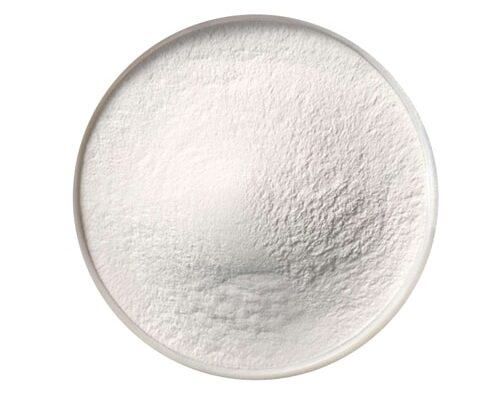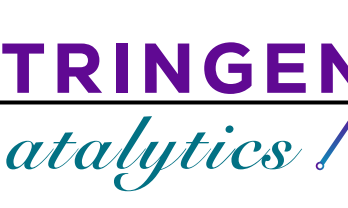Dipterex (Trichlorfon) Market also known as the Trichlorfon market, refers to the global industry involved in the production, distribution, and sale of the chemical compound Trichlorfon, which is commonly marketed under the trade name Dipterex. Trichlorfon is an organophosphate insecticide and acaricide that is widely used in agriculture, horticulture, and public health sectors to control a broad range of insect pests.
The primary purpose of Dipterex is to combat insects and mites that pose a threat to crops, livestock, and human health. It acts by inhibiting the activity of cholinesterase, an enzyme essential for proper functioning of the nervous system in insects and pests. Trichlorfon is effective against a variety of pests, including flies, mosquitoes, beetles, leaf miners, and worms.
The market for Dipterex is influenced by several factors, including the demand for effective pest control solutions in agriculture, the prevalence of insect-borne diseases, government regulations on pesticide usage, and advancements in integrated pest management practices. The market is characterized by the presence of numerous manufacturers, distributors, and suppliers operating on a global scale.
Dipterex is available in various formulations, including liquid concentrates, granules, and powder. It is commonly used in agricultural settings for crop protection, especially in fruit orchards, vegetable fields, and vineyards. Additionally, it finds applications in livestock production to control parasites such as ticks and lice.
Stringent Regulations: Trichlorfon is an organophosphate insecticide, and regulatory bodies often impose strict regulations on its production, use, and distribution due to its potential health and environmental risks. Compliance with these regulations can be challenging for manufacturers, impacting their operations and market growth.
Environmental Concerns: Trichlorfon has been associated with adverse environmental effects, especially in aquatic ecosystems. The chemical can contaminate water bodies and pose risks to non-target organisms. Growing environmental concerns may lead to increased scrutiny and potential restrictions on the use of Trichlorfon, impacting its market demand.
Health and Safety Risks: Trichlorfon is known to be toxic to humans if not handled properly. Prolonged exposure or improper use can lead to health risks for workers involved in manufacturing, handling, or applying the product. Ensuring proper safety measures, worker training, and compliance with safety standards can be a significant challenge for companies operating in the Dipterex market.
Competition from Alternative Products: The market for insecticides is dynamic, with the introduction of new and more environmentally friendly alternatives. The availability of alternative pest control products, such as biopesticides or other less toxic chemical options, can pose a challenge to Dipterex’s market growth and competitiveness.
Resistance Development: Prolonged and extensive use of Trichlorfon can contribute to the development of resistance in target pests. Insect populations can evolve and become less susceptible to the effects of the pesticide over time. Managing resistance through integrated pest management strategies or developing new formulations to combat resistant pests is crucial to maintaining the effectiveness of Dipterex.
Public Perception and Consumer Demand: Growing public awareness and concerns about the potential health and environmental impacts of pesticides can influence consumer preferences and purchasing decisions. Increased demand for organic and eco-friendly products may reduce the market demand for conventional pesticides like Dipterex, requiring manufacturers to adapt to changing consumer preferences.
Volatility in Raw Material Prices: The cost and availability of raw materials used in the production of Trichlorfon can be subject to market fluctuations. This volatility in prices can impact the manufacturing costs and profitability of Dipterex, posing challenges for manufacturers in maintaining competitive pricing and profit margins.
Click Here, To Get Free Sample Report: https://stringentdatalytics.com/sample-request/dipterex-(trichlorfon)-market/1742/
Market Segmentations:
Global Dipterex (Trichlorfon) Market: By Company
• Nufarm
• Nantong Jiangshan Agrochemical & Chemical Limited Liability
• Rainbow
• Nanning Chemical Industry
• Hubei Sanonda
• Shandong Dacheng Pesticide
• Jiangsu Tuoqiu Agriculture Chemical
• Handan New Sunshine Chemical
• Jiangsu Anpon Electrochemical
• Nihon Bayer Agrochem K.K. Japan
Global Dipterex (Trichlorfon) Market: By Type
• 90% Trichlorfon TC
• 97% Trichlorfon TC
• Others
Global Dipterex (Trichlorfon) Market: By Application
• Insecticide for Crops
• Insecticide for Livestock
• Insecticidal for Fisheries
Global Dipterex (Trichlorfon) Market: Regional Analysis
All the regional segmentation has been studied based on recent and future trends, and the market is forecasted throughout the prediction period. The countries covered in the regional analysis of the Global Dipterex (Trichlorfon) market report are U.S., Canada, and Mexico in North America, Germany, France, U.K., Russia, Italy, Spain, Turkey, Netherlands, Switzerland, Belgium, and Rest of Europe in Europe, Singapore, Malaysia, Australia, Thailand, Indonesia, Philippines, China, Japan, India, South Korea, Rest of Asia-Pacific (APAC) in the Asia-Pacific (APAC), Saudi Arabia, U.A.E, South Africa, Egypt, Israel, Rest of Middle East and Africa (MEA) as a part of Middle East and Africa (MEA), and Argentina, Brazil, and Rest of South America as part of South America.
Visit Report Page for More Details: https://stringentdatalytics.com/reports/dipterex-(trichlorfon)-market/1742/
More Report: https://sdresearchnews.com/greenhouse-irrigation-systems-market/
Objectives of Dipterex (Trichlorfon) Market Study:
- Market Analysis: The study aims to analyze the current state of the Dipterex (Trichlorfon) market, including its size, growth rate, and key trends. This analysis helps in understanding the market dynamics and identifying potential opportunities and challenges.
- Competitive Landscape: The study aims to assess the competitive landscape of the Dipterex (Trichlorfon) market by analyzing the key players operating in the industry. It may involve studying their market share, product portfolio, pricing strategies, distribution networks, and other relevant factors. This analysis helps in understanding the level of competition and the strategies employed by market players.
- Demand and Supply Analysis: The study may examine the demand and supply dynamics of Dipterex (Trichlorfon) in the market. It can include analyzing factors influencing the demand for the product, such as the agricultural sector, pest control requirements, and regulatory frameworks. Additionally, it may assess the production capacity, supply chain, and distribution channels to understand the availability of Dipterex (Trichlorfon) in the market.
- Market Drivers and Challenges: The study aims to identify the key drivers and challenges affecting the Dipterex (Trichlorfon) market. This involves understanding factors that contribute to market growth, such as increasing pest-related issues, agricultural practices, and economic factors. It also involves analyzing challenges such as regulatory restrictions, environmental concerns, and the emergence of alternative pest control methods.
- Future Market Outlook: The study may provide insights into the future prospects and opportunities in the Dipterex (Trichlorfon) market. It can involve forecasting the market growth, potential market disruptions, emerging trends, and technological advancements that could impact the industry. This analysis helps stakeholders in making informed decisions regarding investments, product development, and business strategies.
- Regulatory and Environmental Analysis: The study may assess the regulatory landscape and environmental impact associated with Dipterex (Trichlorfon). This involves analyzing regulations related to its production, distribution, and use, as well as evaluating any potential environmental risks and sustainability concerns.
- Customer Insights: The study may gather insights from customers, such as farmers, agricultural professionals, and pest control operators, to understand their preferences, satisfaction levels, and awareness about Dipterex (Trichlorfon). This information helps in tailoring marketing strategies and improving product offerings to meet customer needs.
About US:
Stringent Datalytics offers both custom and syndicated market research reports. Custom market research reports are tailored to a specific client’s needs and requirements. These reports provide unique insights into a particular industry or market segment and can help businesses make informed decisions about their strategies and operations.
Syndicated market research reports, on the other hand, are pre-existing reports that are available for purchase by multiple clients. These reports are often produced on a regular basis, such as annually or quarterly, and cover a broad range of industries and market segments. Syndicated reports provide clients with insights into industry trends, market sizes, and competitive landscapes. By offering both custom and syndicated reports, Stringent Datalytics can provide clients with a range of market research solutions that can be customized to their specific needs.
Contact US:
Stringent Datalytics
Contact No – +1 346 666 6655
Email Id – sales@stringentdatalytics.com



